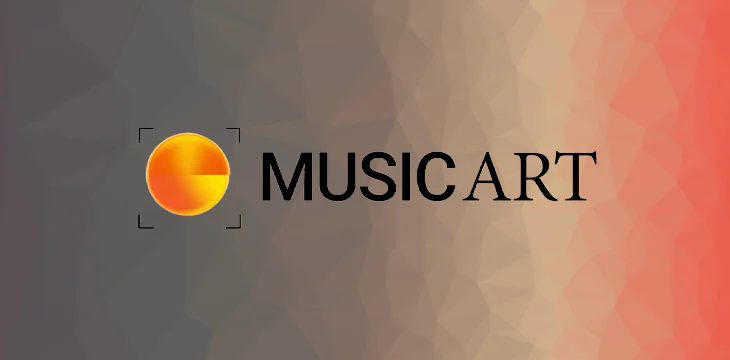
|
Getting your Trinity Audio player ready...
|
Leading up to SXSW, we are reaching out to the various music platforms building on Bitcoin SV (BSV) to learn more about how they empower artists, create unique revenue streams, and strengthen their relationships with fans. In the first interview of this series, we interview the co-founders of MusicArt, CEO Peter Ruppert and CTO Dirk Brockhausen. MusicArt asserts to be the easiest way for musicians to get music into Web3.
How does your platform uniquely monetize audio content?
MusicArt CEO Peter Ruppert and CTO Dirk Brockhausen: Our platform offers a unique way for artists to monetize their audio content. By using our platform, artists can mint their songs and sell them as limited or open editions with a customizable supply of 1, 10, 100, 1000, or more. This provides artists with an alternative revenue stream beyond traditional streaming services like Spotify.
For instance, if an artist mints an edition of 100 copies and sells all of them for $1 each, they will earn $90 after MusicArt’s commission of 10%. This is a significant increase in earnings compared to what they would typically earn from streaming their music on platforms like Spotify, where the average payout per stream is relatively low.
Overall, our platform offers a simple and effective way for artists to monetize their audio content and earn more from their music. By using our platform, artists can sell their music directly to fans and receive a greater share of the revenue, while fans can own unique and valuable pieces of music that they can cherish for years to come.
What are the flaws in Spotify’s (for example) business model?
MusicArt CEO Peter Ruppert and CTO Dirk Brockhausen: Spotify’s business model has been successful in terms of its popularity and user engagement, but it has some flaws that impact both artists and users. One major issue is that artists earn a relatively small amount per stream, with an average payout of only 0.3-0.4 cents. This makes it challenging for artists to earn a sustainable income from their music on the platform.
Furthermore, according to a report by Music Business Worldwide, nearly 80% of artists on Spotify have fewer than 50 monthly listeners. This means that the vast majority of artists on the platform are not able to reach a large audience or generate significant revenue from their music.
In addition, approximately 80% of music tracks on Spotify have been played fewer than 5,000 times, which translates to earnings of only around $17.50 based on the average payout per stream. This means that many artists on the platform are not able to earn a significant income from their music, even if they have a loyal fan base.
For users, the main flaw in Spotify’s business model is that they are paying for a monthly streaming subscription, but they do not own any of the music that they stream. If they cancel their subscription, they lose access to all of the songs they have collected during their subscription period.
Overall, Spotify’s business model has been successful in terms of its popularity, but it has some flaws that impact both artists and users. By recognizing these issues, we can work towards creating a more sustainable and equitable music industry for everyone involved.
How does your platform connect fans and artists more directly?
MusicArt CEO Peter Ruppert and CTO Dirk Brockhausen: If the fan buys a song, there is a direct relationship between the fan and the artist. The artist gets a notification who bought his song. Looking at the streaming model, there is no relationship. On MusicArt the fan can easily support the artist.
Do you view the pay per stream model as having too much friction for listening to songs vs. ads or subscription models?
MusicArt CEO Peter Ruppert and CTO Dirk Brockhausen: The pay-per-stream model in the music industry faces a major obstacle: most artists earn very little while users don’t actually own anything. While blockchain technology offers the potential for artists to be rewarded for their streams, it may be challenging to attract enough listeners to the model.
Moreover, most fans are used to the all-you-can-eat buffet model of streaming on platforms like Spotify, where they pay a monthly subscription fee to access unlimited music. As such, transitioning to a per-stream model could be difficult for many listeners to accept, as they may not be willing to pay for music they don’t consume regularly. While the pay-per-stream model has its benefits, it may not be feasible in the current music market, as listeners have grown accustomed to the all-you-can-eat model and may not be willing to change their behavior.
Do you view blockchain technology as disrupting the current music industry?
MusicArt CEO Peter Ruppert and CTO Dirk Brockhausen: By using blockchain, musicians can leverage their products in new and innovative ways, such as creating limited edition sales, promotional copies, and unique fan experiences that are tied to blockchain transactions. Blockchain technology also allows for the creation of smart contracts that can automatically enforce revenue-sharing agreements and protect the intellectual property of musicians.
In addition, blockchain can enable fans to directly support their favorite artists by purchasing tokens that represent an interest in their creative work. This can create new revenue streams for artists and help to build stronger relationships with fans. Furthermore, blockchain technology can also be used to track and distribute royalties to musicians in a more transparent and efficient way, which can help to address some of the issues with traditional music distribution models.
Overall, blockchain technology has the potential to revolutionize the music industry by empowering musicians and fans in new ways. By leveraging the benefits of blockchain, musicians can create new revenue streams, build stronger relationships with fans, and protect their intellectual property, which could ultimately lead to a more sustainable and equitable music ecosystem.
What role do you see NFTs having for artists in engaging their fan base?
MusicArt CEO Peter Ruppert and CTO Dirk Brockhausen: NFTs can play a significant role in helping artists engage with their fan base by providing a way to sell digital items with registered ownership. At MusicArt, we recognize the importance of NFTs in enabling artists to monetize their digital creations and engage with fans in new and innovative ways.
In addition to providing registered ownership, we also strongly support royalty payments for NFT sales. With MusicArt, royalties are paid to artists for re-sale transactions, and the artist determines the percentage they will receive when they mint the NFT. This provides artists with a way to earn ongoing revenue from the sale of their digital creations and creates a more sustainable income stream over time.
The concept of digital ownership is also essential for our implementation of royalties, which is why NFTs play a critical role in this process. By using NFTs, artists can establish a clear and secure digital ownership structure that enables them to earn fair compensation for their work, while also fostering stronger relationships with their fan base.
Overall, we believe that NFTs can be a powerful tool for artists to engage with their fan base, create new revenue streams, and establish a more equitable and sustainable music ecosystem. By leveraging the benefits of NFTs, artists can unlock new opportunities for creativity, innovation, and growth in the music industry.
Why did you choose to implement Bitcoin SV for your platform?
MusicArt CEO Peter Ruppert and CTO Dirk Brockhausen: We chose to implement Bitcoin SV for our platform for several key reasons. Firstly, Bitcoin SV is the original Bitcoin, as defined by the white paper and Satoshi Nakamoto. It provides all the features that we need to support our platform and offers a secure and reliable blockchain infrastructure.
One of the critical features that we need for our platform is the ability to store the digital assets of NFTs on the blockchain. Bitcoin SV’s large block size and low fees make it possible for us to pay all the miner fees and store the digital assets of NFTs on the blockchain, which ensures a secure and transparent ownership structure for artists and buyers alike.
In addition, Bitcoin SV is highly scalable, which is critical for our platform as we aim to serve millions of users in the future without any blockchain bottlenecks. This scalability ensures that our platform can continue to function effectively and efficiently as it grows over time.
Finally, Bitcoin SV supports micropayments, which is essential for our platform as we aim to sell NFTs at low prices without losing significant fees on payment transactions. By using Bitcoin SV for payment transactions, we only need to pay a fraction of a cent for each transaction, making it a cost-effective and efficient solution for our needs.
Overall, we believe that Bitcoin SV offers the optimal combination of security, scalability, and low fees for our platform, and we are confident that it will help us deliver a seamless and reliable experience for our users.
Have you, or do you plan to implement any aspects of other blockchains (for example, Ethereum, Solana) into your platform as well? If not, why?
MusicArt CEO Peter Ruppert and CTO Dirk Brockhausen: We currently have no plans to implement any aspects of other blockchains, such as Ethereum or Solana, into our platform.
One of the key reasons for this is the superior functionality and features offered by Bitcoin SV. As the original Bitcoin, Bitcoin SV has been purpose-built to meet the needs of businesses and enterprises, with a focus on scalability, security, and reliability. We believe that Bitcoin SV provides the optimal infrastructure for our platform, and we are confident in its ability to meet our needs both now and in the future.
In addition, we have concerns about the stability and security of other blockchains, such as Solana, which has experienced significant downtime and other issues in the past. We believe that Bitcoin SV’s track record of reliability and security makes it the best choice for our platform.
Furthermore, we are aware that other blockchains, such as Ethereum, have high transaction fees that may not be suitable for low-priced items, which is a core aspect of our platform. By using Bitcoin SV, we can ensure that our transaction fees remain low and affordable, allowing us to offer NFTs at low prices without losing significant fees on payment transactions.
Overall, we believe that Bitcoin SV provides the best blockchain infrastructure for our platform, and we have no plans to implement any other blockchains at this time.
Why choose to implement the STAS protocol for NFTs?
MusicArt CEO Peter Ruppert and CTO Dirk Brockhausen: We chose to implement the STAS protocol for NFTs for several reasons. Firstly, the protocol uses native Bitcoin Script for smart contracts, which we are already familiar with and appreciate.
The STAS protocol allows for two parts of the token: the contract transaction and the issuance transaction. The contract transaction includes metadata such as the title of the song, artist name, description, and a reference to the digital asset. The issuance transaction creates all NFTs for the edition, and the owner is the minter.
We also enhanced the STAS protocol to include serial numbers in the OP_RETURN part, which can be used for further use cases, such as granting backstage access to owners of specific serial numbers.
STAS NFTs are easily traceable and do not require third-party agents. Overall, the STAS protocol aligns with our requirements and provides the features we need for our platform.
Considering all of these factors, choosing the STAS protocol for our NFTs was an easy decision.
What is the purpose of encrypting music? Are the music files stored on-chain?
MusicArt CEO Peter Ruppert and CTO Dirk Brockhausen: To protect the intellectual property of the artist and ensure that they are properly compensated for their work, the music files are encrypted and stored on a public blockchain. This means that only the current owner of the NFT can decrypt and listen to the song.
If the music files were not encrypted, anyone could access them on the blockchain and listen to the music without paying. This would reduce the number of users who purchase the NFT, as they could simply access the music for free.
However, to give users a preview of the song before purchasing the NFT, the minter also uploads a sample of the song, which is accessible to everyone. This allows users to get a first impression of the song before deciding to purchase the NFT.
Thank you, Peter and Dirk, for answering my questions. I hope the readers learned more about the platform and how they uniquely approach monetization in the music industry.
Watch: Music & Blockchain

 11-10-2024
11-10-2024 


